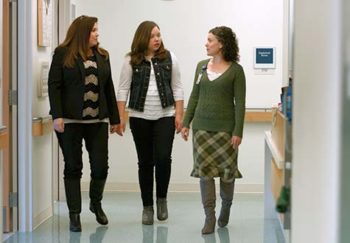
Look back on our 2017 stories: A video about an 11-year-old's rare disease, plus LGBTQ health, talking to kids about violence, ketogenic diet and apple cider vinegar's health benefits.
If your sexual orientation or gender identity veers from the standard norms, you face very specific health risks and barriers to healthcare. Understanding the LGBTQ+ (also sometimes called LGBTQIA+ — read about these terms) health issues you face can help you care for and advocate for yourself. Or for someone you love.
Being gay, trans, gender nonconforming, or nonbinary doesn’t just affect who you date or marry. Your identity can affect every aspect of your life. Stigma, bias, discrimination — obvious or subtle — shadow your experiences at school, work, place of worship, in public spaces, in court, and at the doctor’s office.
Over 50% of all LGBTQ+ people have experienced discrimination while visiting a healthcare provider. As a result, many people in the LGBTQ+ community:
These behaviors of not being open with a doctor or nurse can lead to misdiagnoses and overlooked symptoms. Plus, LGBTQ+ people tend to miss out on preventative screenings that can catch and treat cancers or other chronic or life-threatening diseases.
And so, it’s no surprise that national studies show:
According to a 2021 Gallup poll, 7% of people in the U.S. identify as LGBTQ+. That percentage soars to 20% for Gen Z (born between 1991-2003).
More than ever, we need to address and reduce the stigma that damages LGBTQ+ health. All of us can play a role in this critical effort.
Being an ally for the LGBTQ+ community means learning, listening, and supporting with action. Show up, speak up, and stand up when needed.
Go to the doctor with your LGBTQ+ loved one. Even the most confident person can feel powerless in a clinic.
Check out and share with others:
Know your terms:
Celebrate:
Watch and read videos and articles on LGBTQ+ health:
Know where to seek transgender healthcare:

Look back on our 2017 stories: A video about an 11-year-old's rare disease, plus LGBTQ health, talking to kids about violence, ketogenic diet and apple cider vinegar's health benefits.

You can't prevent sexual abuse. But you can empower teens to make healthy choices. Learn how to teach teens about sex.
Get stories & health tips every week